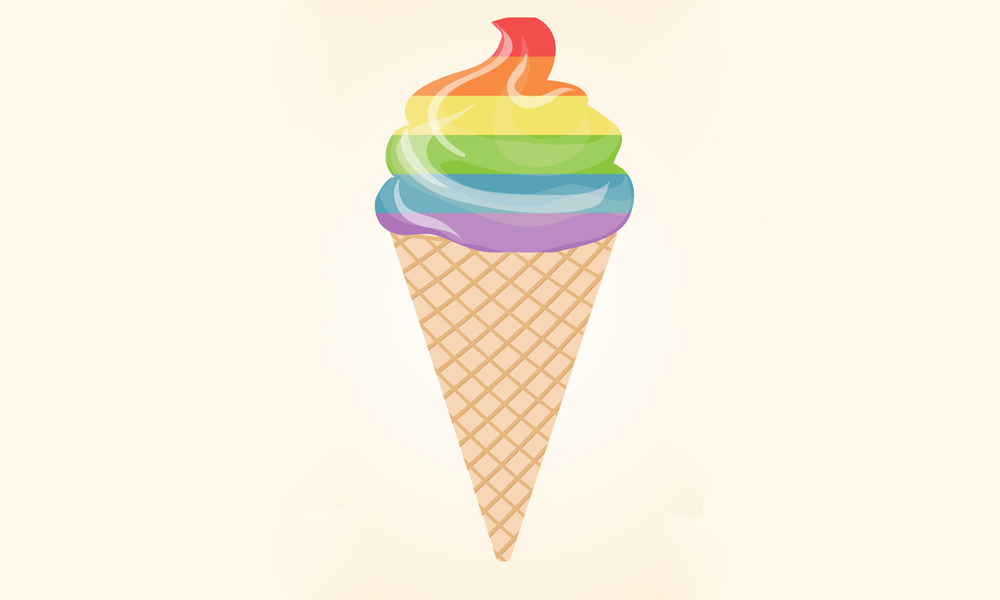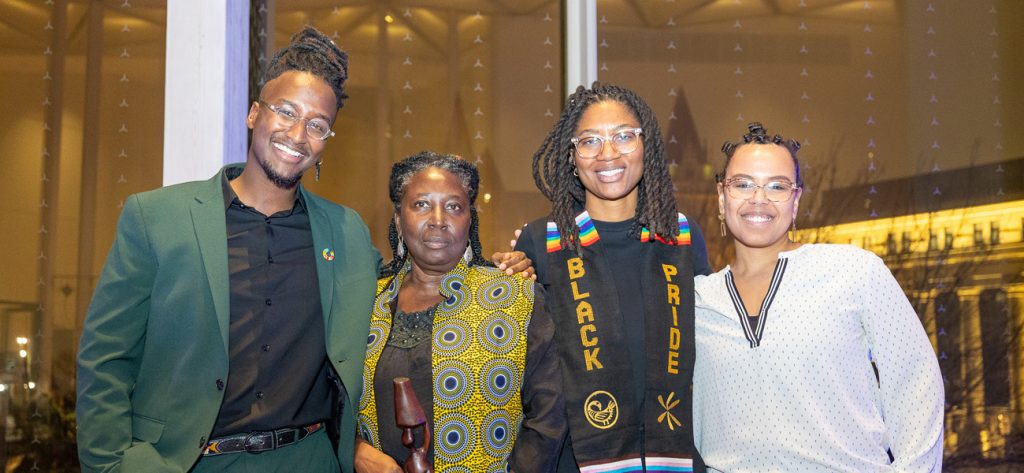There’s a power in naming things and in not naming things…
By Paul Gallant
Back in the 1990s, one of the hopes I had for feminism, and its flamboyant offspring gay liberation, was that gender would become a far less important way of seeing each other and organizing the world. Sure, in the realm of sexual desire and romance, gender would likely (though not always) direct who we’d choose as life partner, fuckbuddy or something-in-between. But I expected that sexual orientation and gender identity would become more like having a preference for a certain ice cream flavour, a preference that’s important when standing at the gelato-shop counter, but with few implications in other aspects of one’s life. You know: a single straight cis male scientist wears dresses to the lab and practises kickboxing; a polyamorous cis butch lesbian gives manicures; a monogamous straight trans woman runs a mining company and wears ties to the office.
And all those aspects of a person might change over time. Our conventional notions of what is men’s stuff and what is women’s, what is straight and what is gay, would (outside the bedroom) break down into a blur of individual characteristics. If a person conforms to stereotypes, great. If they don’t, also great. The glass ceiling would be shattered, men would be more in touch with their feelings, homophobia would seem nonsensical and the world would be a happier place.
My prediction was a little right, but completely wrong. North American society has certainly become more obsessed with all the possibilities of sexual and gender identity. But rather than the freewheeling, boundary-less utopia of my imagination, we seem intent on nailing things down. Lots of nails. And a label on each nail.
In the straight mainstream, “gender reveal parties” have become all the rage, festooned with all the pink-and-blue clichéd signifiers of masculine and feminine, based on whether certain body parts are spotted in an ultrasound. Considering research that sexual orientation and “sexually differentiated childhood behaviour” may be influenced by hormones during gestation, this seems like a desperate (and futile) parental effort to lock things down before the process is complete, a ritual cleansing to shore up gender norms before a child opens their eyes. Conversion therapy is, it seems, for loser parents who didn’t act early enough.
But the progressive side of things has also grown more rigid. While old-school labels like the affectionate “tomboy” have fallen into disfavour – why suggest that a sporty girl is boy-like? – our new labelling system has an ever-expanding but very precise menu. “Cis” or “trans” might be considered base ingredients, though these identities may be less relevant if one identifies as non-binary. Then there’s sexual orientation. Though many people see sexual orientation as being a hetero or homo switch, it’s been largely regarded as a spectrum since Alfred Kinsey’s studies of sexuality in the 1940s and ’50s. Kinsey gave us his six-point scale, so that bisexual, with an equal taste for men and women, sits at position number three.
We might also imagine a spectrum for intensity of desire – from asexual, which used to be thought of as a dysfunction, to (to use a label close to my heart) sex-positive slut, which used to be thought of as a pathology. Another spectrum runs from romantically oriented to sexually oriented, and another from monogamous to polyamorous.
Considering the spectrum of passive to active, gay men, especially, have become increasingly strict. Gay TikTok, when it’s not taking its shirt off and wagging its grey track pants at us, seems primarily dedicated to stereotyping tops (selfish, messy, unselfconscious), bottoms (eager to please, effeminate, neurotic) and vers guys (hard-to-find misunderstood underdogs).
On top of this matrix of who we are and what we want in our conjugal relationships, add another matrix of how our gender is seen by those around us and how we would like our gender to be seen. So, then, someone might introduce themselves as a cis femme bisexual female who’s more romantic than sexual, though still somewhat sexual, more passive than active, more poly than monogamous – this is the identity quadrant that most drives lesbians crazy. Or we might meet a genderqueer trans man who’s asexual and loves group cuddles – this identity quadrant is fun at parties with dancing and flirting, less so at orgies.
But even then, gender and sexuality do not define us. Ethnic and cultural backgrounds, and how they intersect with gender and sexuality, are just as important. A cis Black gay man from the Caribbean may share some of the same sexual desires and romantic inklings as a cis white gay man from Sudbury, but his lived experience may give him a completely different worldview. There might be a sizzling synergy between these two – homosexuality at its best plows lustfully across socio-economic lines – or their interaction might be filled with non sequitur after non sequitur. Identities can bring us together, but these days they also do a good job of pushing us apart.
Many societies have distinctive ways of seeing sex and gender that do not map easily onto any of the matrixes I’ve already sketched out. Two-spirited people in Indigenous American culture, Baklâs in the Philippines, Hijras in India, Fa’afafine in Samoa. Add as many letters as you want to LGBT2Q+, you’ll never capture the breadth of global sexual and gender identities. Though it’s a clunky bureaucratic invention, I’ve grown fond of the acronym SOGI (sexual orientation and gender identity, sometimes used as “the SOGI community”) since it can include anybody, no matter their labels.
There’s nothing threatening or apocalyptic about this proliferation of labels, and their constant evolution. Over the past 20 years, as an editor and writer, I have witnessed “transexual” turn into “transsexual” turn into “transgendered” turn into “transgender” turn into “trans.” Social media has likely been a major factor in this explosion of terminology. The digital realm has allowed people to communicate expansively about things that, for centuries (or perhaps even the whole of human history), were unspeakable. The hard-to-articulate lingering glance has been replaced by hours and hours of verbiage on WhatsApp, Twitter and YouTube.
Language must evolve so that we can speak with more precision, more thoughtfulness and, hopefully, more compassion. A term like “demisexual” (people, according to the Trevor Project website, who only experience sexual attraction once they form a strong emotional connection with another person) may go viral, or it may end up in the dustbin of history. But if “demisexual” captures a very specific way of being in the world that matters to the people who are experiencing it, then it has value.
The trouble is when we get too dogmatic about labels, as if the labels themselves are as real as the experiences and desires they try to capture. Labels should be handy (but imprecise) descriptions of elusive realties, not ways to suss out the ideologically impure or win social status.
There’s a power in naming things. But there is also a power in leaving things open to see what surprises emerge.
—
PAUL GALLANT is a Toronto-based writer and editor who writes about travel, innovation, city building, social issues (particularly LGBT issues) and business for a variety of national and international publications. He’s done time as lead editor at the loop magazine in Vancouver as well as Xtra and fab in Toronto.







POST A COMMENT